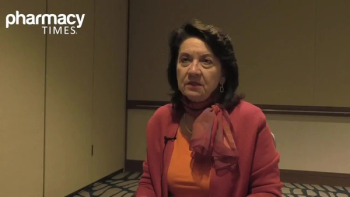
Oral Oncology Market Challenges
David Hileman, senior vice president of Omnicare, recently discussed how market access to oncology medications is changing and presented strategies manufacturers can use to support patient need through compliant distribution channels.
David Hileman, senior vice president of Omnicare, recently discussed how market access to oncology medications is changing and presented strategies manufacturers can use to support patient need through compliant distribution channels.
Clinical decision-making is being increasingly affected by oncology therapy market access, according to David Hileman, RPh, senior vice president of Omnicare. Oral oncology therapies are particularly rife with challenges, he explained during a presentation at the 9th Annual Armada Specialty Pharmacy Summit.
To address these challenges, Hileman provided an overview of the current oncology market landscape and offered ways for distributors to use specialty pharmacy and group purchasing organization (GPO) services to enhance adherence, affordability, and access to medications.
Pros and Cons of Oral Administration for Oncolytics
In 2012, 7 of 11 (64%) oncology drug approvals were for oral therapies, Hileman pointed out—and the pipeline is anticipated to be similarly robust in the years to come. Although the benefits of oral oncolytics seem obvious—they are more convenient for patients, have fewer adverse effects, are easily administered, and are generally preferred by patients—oral agents also have some drawbacks.
Oral oncology medications fall outside the buy-and-bill model, which means that their use usually shifts the site of drug administration from physician-monitored settings to the patient’s home. Adherence and dosing compliance cannot be as easily monitored under these circumstances, and there is an added need to consider drug-drug and food-drug interactions. Plus, although oral agents may place less of an out-of-pocket burden on patients initially, currently there is no out-of-pocket cost limit. Therefore, Hileman noted, patients could actually end up paying more for oral oncology medications.
Oncology Market Access Trends
Today, about half (48%) of all oral oncology volume goes through a specialty pharmacy, whereas almost one-third (32%) goes through traditional retail channels, said Hileman. Another 20% goes through mail-order or is dispensed by providers. Interestingly, 8% of oral oncology volume goes through the medical benefit.
Hileman identified 3 market trends that have emerged as a result of recent changes in provider reimbursement:
1. Office-based dispensing pharmacies: Some larger physician practices have opened their own dispensing pharmacies in response to the changing revenue model for oncolytics. “Ten percent of practices currently dispense oral oncology drugs directly, and that number is expected to grow,” said Hileman. These services could be viewed as competitive with those offered by specialty pharmacies.
2. White bagging: Under white bagging, payers purchase drugs through a specialty pharmacy and have them shipped to the provider’s office — in other words, the provider is no longer doing the drug purchasing. This method is not preferred by oncologists, because it only allows them to bill for a drug administration fee, noted Hileman. There is a potential for significant drug waste with white bagging, and the practice could create operational roadblocks (such as drug storage and refrigeration) for oncologists.
3. Clinical pathways: Adherence to clinical pathways is driven mostly by payer pressure, said Hileman. They may refuse to cover an oncology drug that is outside of an approved pathway, but payers also offer providers incentives to follow these guidelines. Clinical pathways can put additional pressure on drug manufacturers, however. “Not only does Pharma have to get the drug on formulary, it needs to work with providers and payers to ensure appropriate position within the relevant pathway,” said Hileman.
Manufacturer Distribution Strategies for Oral Oncology
More than 95% of distribution in oncology flows through group purchasing organizations such as ION, US Oncology, and VitalSource, Hileman pointed out.
To optimize oral oncology distribution, manufacturers can choose a limited distribution model for their therapies. Limited distribution can help manufacturers manage inventory control, compliance programs, and patient data. To promote adherence, manufacturers can look to oncology-oriented specialty pharmacies and GPOs to provide enhanced support to patients, Hileman concluded.
Newsletter
Stay informed on drug updates, treatment guidelines, and pharmacy practice trends—subscribe to Pharmacy Times for weekly clinical insights.

















































































































































































































